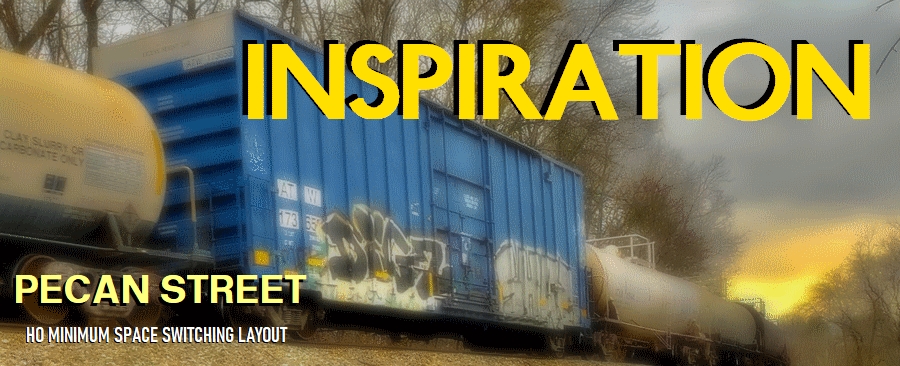 |
| |
"The lure of the
full-size railway is what in the first place draws
many people to the model railway hobby. It is at this
intangible level of the emotions that the railway
makes its strongest appeal, although the
technological and historical aspects are undeniably
full of interest." (Terry Allen, Encyclopedia of Model
Railways, 1979)
There are many ways and many
channels through which the incentive spark for railway
modelling may catch on; here are some sources of
inspiration which had an impact on Pecan Street in
specific as well as on my railway modelling in general.
|
| |
|
| |
| Like
many others, I was introduced to the hobby as a
young child through an oval of track laid out on
the living room floor, and a train whizzing
around, backwards and forwards. Those trains were
either Tri-ang OO models based on British
prototypes or Lima HO continental European
models. And like
many others, my interest in model trains gave way
during my teenage years to other things. The
impetus to get back into the hobby as a twen was
in no small way triggered by a display of a few
HO American models in a local model shop's
window. Neither the locomotive type (GP40) nor
the railroad company (Cotton Belt) meant anything
to me at the time, but I liked the look and feel
of it enough to buy one - and get back into model
trains.
While the model shop has
been gone for a good thirty years now, I still
have that Atlas GP40. Back in 1984 the running qualities of
this flywheel equipped locomotive were head and
shoulders above the average European model
specifications, which was slightly ironic since
this GP40 was made for Atlas by Roco in Austria.
|
|
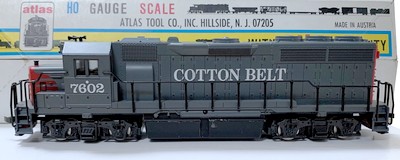 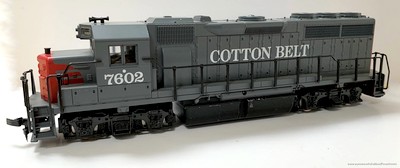
|
|
| |
| |
|
MODEL
TRAINS WITH A PURPOSE
|
|
|
| |
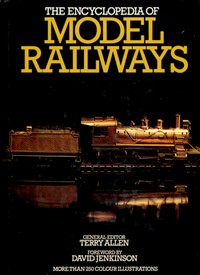 |
|
Even when I got back into
the hobby, an oval of double track and a
few sidings seemed to be what model
trains were all about (albeit now run on
a sheet of plywood).
Terry Allen's Encyclopedia
of Model Railways (Octopus, 1979)
changed all that, by making me realize
that you could actually run model trains
with a purpose. It was the first time I
read about waybills and how North
American modellers ran freight trains in
a way that emulated the real thing. I
also discovered that an end-to-end layout
could be a consuming challenge if you
actually followed British railway
prototype practice. It was nothing short
of a revelation, and it totally changed
my perspective on railway modelling.
A
book was, of course, a typical
information channel of the 1980s and
early 1990s, before the advent of the
internet and social media. Today,
inspirational input on how to not just
model railways but do it in a way that
provides sustained entertainment can be
found in enormous numbers and in
generally high quality. Websites, online
videos, social media groups and many more
provide almost endless ideas and
encouragement, and no matter if you're a
beginner or a seasoned modeller, there's
bound to be something out there that will
kickstart your creative thoughts.
|
|
|
| |
| |
|
|
FROM
SMALL LAYOUTS TO MICRO LAYOUTS
|
|
|
| |
| One thing the "Encyclopedia
of Model Railways" didn't change was
the idea that you needed one of
those sprawling and grandiose
layouts the modelling press was (and often still
is) championing in order to have fun. It wasn't
until the arrival of the world wide web in the
early 1990s that I gradually discovered
alternatives in the form of small layouts focused
on operation: John Allen's Timesaver, Alan Wright's Inglenook Sidings, or Scot Osterweil's Highland Terminal. They all provided inspiring
templates and introduced me to the shelf-style
"small layout equals great fun"
formula. |
|
| |
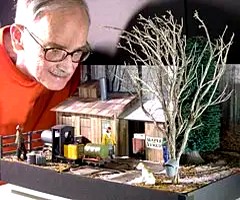
|
|
But there was
something even smaller than small - the minimal
space "micro layout". Its champion
was Carl Arendt (1936-2011) who, having built his
first micro layout in 1966, launched a highly
influential website
in 2002 which ultimately became the definitive
take on tiny layouts.
"Micro
layouts are small model railroads, usually
less than three or four square feet in area,
that nonetheless have a clear purpose and
excellent operating capability."
(Carl Arendt)
Arendt (who also published three books on the
subject matter) passed away in 2011, but his
website continues
to be accessible.
|
|
| |
| Another highly
influential source of inspiration for small and
tiny layouts was Chris Ellis (1937-2025), who
self-published the bi-monthly Model Trains
International magazine from 1996 to 2015 for
a total of 118 issues. I would regularly browse
Carl Arendt's website and had a long-standing
subscription to MTI throughout the mid- to late
2000s, but for the longest time micro layouts
were more of an interesting curiosity to me than
a template which I would want to use for my
personal layout. As is so often the case, the
right circumstances had to emerge. When I replaced my 2004 Little
Bazeley 00 scale shunting puzzle in 2021 with its
Mk2 version, I remained without a
layout for my small collection of HO scale
US locos and freight cars. I was, it seems, in
layout planning and building mode, and found
myself contemplating the possibility of having a
second, American style switching layout.
|
|
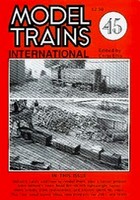 |
|
| |
| But being, at least for the moment, without a
dedicated space to permanently set up a layout (let alone
two), a second layout would need to have a very small
footprint. And that's when I remembered a specific type
of micro layout. |
| |
| |
|
|
| |
| Working within the micro layout framework, Chris
Ellis (himself a prolific designer, builder and operator
of such small layouts) first introduced what he called a
"tuning fork layout" as an "ultra
simple multi-mode switching plan" in Model
Trains International #45 in March 2003. |
| |
|
| |
The concept as such is much older, but Ellis
was the first to pin it down and give it a name
that stuck.
"A very
small layout indeed, not much more than a
diorama (...) just 4 ft long and 4.5 in.
wide; I call it the "Tuning Fork",
because that's what the track layout looks
like - a Hornby Y point in the middle giving
two parallel tracks or sidings (...) This
doesn't sound like much but in practice it is
immense fun, very quick and easy to set up,
totally portable, light and quick to
build." (Chris Ellis, The
Hornby Book of Model Railways, 2nd
edition, 2009)
|
|
| |
I was inclined to believe Ellis,
since another prolific author, Lane
Mindheim, arrived at the same conclusion
(and pretty much track layout), albeit
coming from a completely different angle
of approach (his "one turnout
layout" is
primarily rooted in the greatly
simplified track layouts of contemporary
US railroads). So whereas Ellis
saw the "tuning fork" as an
escape hatch for the space-starved
modeller, Mindheim
perceived a realistic track pattern for
prototypical operation in an achievable
format:
"A
layout that [...] is within the reach
of any hobbyist, is inexpensive, and
only has one turnout [...] can be
both highly plausible and fulfilling
to operate."
|
| |
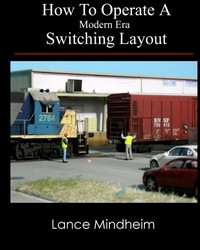 |
|
Mindheim's
concept of how to design, build
and operate a realistic (modern)
switching layout is highlighted
in four books he published
between 2009 and 2011, but quite
unlike Ellis, he is rather
generous with the actual space
allocated (notwithstanding the
occasional reference to a
"tiny footprint").
Which makes sense, since
Mindheim's "one turnout
layout" is concerned with
maximising prototypically correct
operation, not minimising the
layout's size. I wasn't
therefore going to follow any of
Mindheim's layout ideas per
se, but combining his
operations-based approach (which
I tend to call "modern
minimalist") with
Ellis's space-saving concept
provided me with the inspiration
to incorporate a little bit of
both of these sets of modelling
ideas.
It also reminded me of the
late great John Allen, whose
advice was to "start
small and build well, plan for
operation and build with care,
and you will be amazed at how
much fun a small pike can
be".
|
|
|
|
| |
| |
|
|
| |
| Every modeller has their
prototype favourites. When it comes to North American
railroads, I find that I pretty much like any kind of
locomotives, old or modern. |
| |
| However,
when it comes to rolling stock, I have a real
soft spot for boxcars.
They are, as the Union Pacific
points out on its website, "one
of the most iconic pieces of railroad equipment
and certainly the most recognizable".
But there's more to
boxcars than just that.
Together with the paint
schemes used on locomotives, they are also the
single most colourful element of North American
railroading, even if they come in the classic
"boxcar bauxite/brown" (since these
days they are inevitably covered in graffiti).
Of course boxcars have been
pronounced by many to be on the way out, and
their numbers have certainly dwindled in the face
of intermodal traffic.
But boxcars are still around
(mostly within mixed freights, but on rarer
occasions you can also find modern power still
pulling an entire string of almost nothing but
boxcars), and some experts even see a future for
them.
In terms of modelling
inspiration, having a preference for boxcars is
of course a perfect fit with most switching
layouts, since these commonly use boxcars as a
major type of rolling stock - so a "tuning
fork" layout would provide me with the
perfect excuse to build up and run a nice
collection of boxcars.
|
|
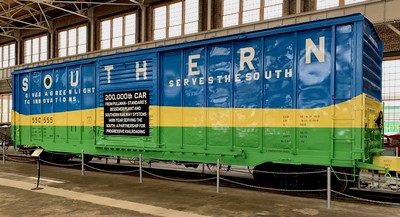
North Carolina Transportation Museum, Spencer NC,
13 April 2022
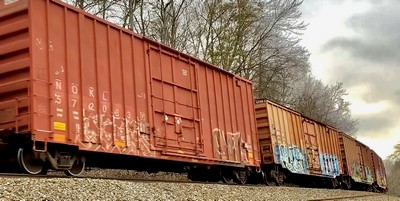
Markham VA, 18 November 2019
(click image to view short video of a string of
boxcars)
|
|
| |
| |
|
|
| |
| Where do layouts get their names from? Usually there
is at least some degree of personal connection present in
choosing what you are going to call your creation. |
| |
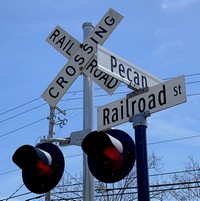 |
|
So why Pecan Street? There
actually is a Pecan Street located in Abingdon
Va, and not only does it run up to a level
crossing, it also intersects with Railroad
Street. What more of a hint (or, in this case,
sign) do you need?
The name has a nice ring to it, and since
Abingdon Va is one of my favourite places in the
US (and still has Norfolk Southern trains running
through it), it sort of stuck with me right from
the planning stage.
|
|
 |
|
| |
| |
|
|
PROTOTYPE
REALITY CHECK SPARK
|
|
|
|
| |
| With inspirational sparks both decades old and
recently acquired, a vague idea slowly began to take
shape and started morphing into a project. Now I was
curious to see if there could also be a "prototype
spark" - what did railroad locations with just a
single turnout look like in the real world, and was there
enough visual and operational appeal? |
| |
| My first discovery really
shouldn't come as a surprise - railroads in the
United States aren't the only ones who
rationalised their operations and simplified
their track layouts over time. Colnbrook Rail
Terminal, located on the western edge of London,
England, receives jet fuel which is then
transported onwards to Heathrow Airport by
pipeline. It was originally part of a railway
line that closed in 1966, and the remnants of
that line now form the oil terminal.
It is evident at first glance that Colnbrook
is most one of the closest prototype example
along the lines of Chris Ellis's "tuning
fork" layout concept you'll find anywhere in
the real world. In this view, taken in May 2021,
Class 60 054 has cleared the switch after a
shunting move.
|
|
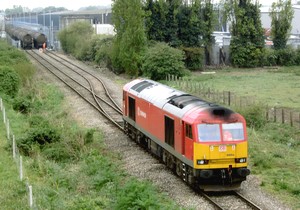
J. Foulger photo
(licensed for reuse under
the Creative Commons Attribution-ShareAlike 2.0
Generic License)
|
| |
|
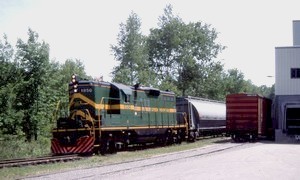
Green Mountain RR, GP9 #1850, Smithview VT, 1991
George Melvin photo, © Adrian Wymann collection
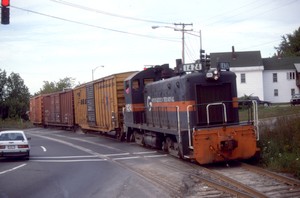
Springfield Terminal, SW9 #1424, Winslow Me, 1992
© Adrian Wymann collection
|
|
The prototype locations in the US
featuring a single switch and two tracks
illustrated here are but a sampling - there must
be thousands of them. Not all of them are
"true" tuning fork track layouts like
Colnbrook; often one of the tracks continues on
as a through line. However, these vignettes do
convey an idea of what a layout could look like
in terms of atmosphere. A bit of research into
this type of track configuration in the real
world quickly showed just how diverse the
settings can be, ranging from switching across a
street to just two tracks in what seems like the
middle of nowhere, surrounded by nothing but
trees - and pretty much all and anything in
between.
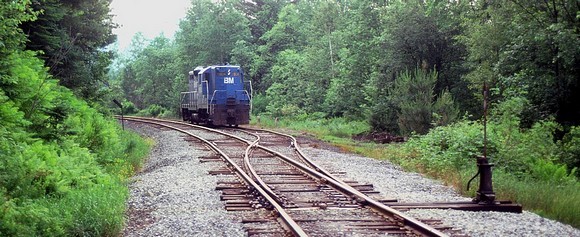
Boston & Maine, GP9 #1804, unknown location,
1983
© Adrian Wymann collection
|
|
| |
| Applying these findings to a
model layout with just one switch meant that
there was an enormous scope of different types of
settings and overall atmosphere to choose from -
yet another point very much in favour of the
simple "tuning fork" layout. |
|
| |
| |
|
|
| |
| I assume every modeller has them - one or (more
likely) more boxes full of kits and items that were
bought at a point in time in the past for a layout or a
module or a project that, at least so far, has not
materialized. |
| |
| In my case, I had a stack of
various items that had been aquired over time for
a US prototype switching layout based on an
industrial park. Plans had been drawn up, and
even a few tentative first steps undertaken, but
things never progressed too far because, quite
simply, I lacked the space I felt was needed.
Of course, it was very convenient to have all
those items stashed away and thus ready at hand
when the inspirational flash for Pecan Street
hit. But perhaps most importantly, putting
together this micro layout also meant that at
least some of those items stored "for
later" actually got put to use.
Using mostly what I already had then became a
major drive in making Pecan Street happen.
|
|
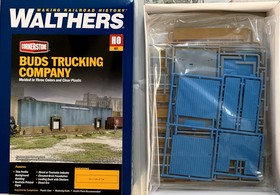 |
|
| |
|
| |
|
| |

Text,
prototype and model pictures are (c) 2022-2025
Adrian Wymann.
|
| |
page created 11 March 2022
last updated 19 July 2025
|
|
| |




















